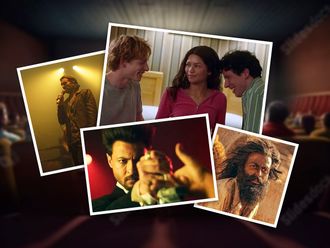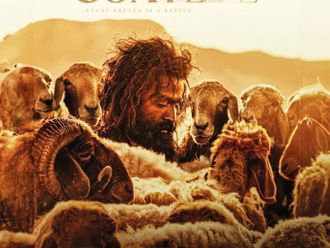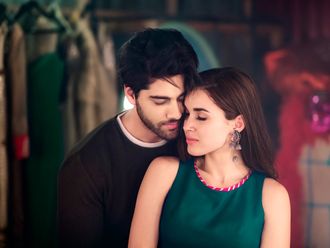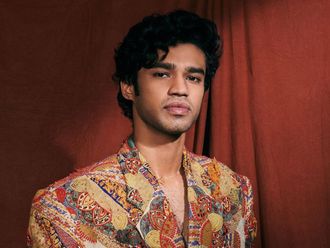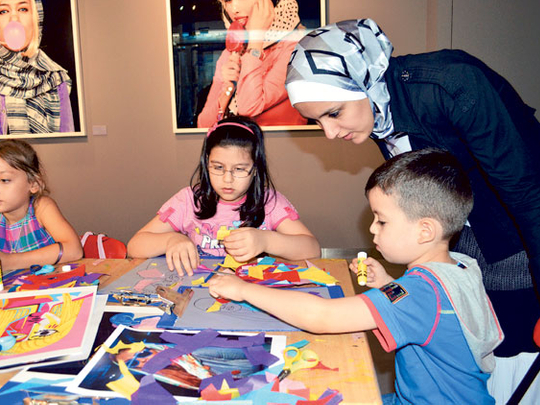
Step into The Farjam Collection @ DIFC this month and you will find it buzzing with the laughter and energy of children. Throughout the year, the gallery hosts carefully curated exhibitions of priceless artworks from the Farjam Collection, which is one of the largest private collections of Middle Eastern and international art in the world. But in summer, the gallery gets transformed into an art studio for its annual Art Camp for children.
The third edition of the camp began on July 1, and will run for four weeks. The camp is open to children between the ages of 7 and 10, and participants can join for as many weeks as they like.
“The main purpose of our gallery is to focus on educational activities and to engage young people in the arts. We regularly organise guided tours of our exhibitions by art experts, and conduct various programmes for university students. But we have decided to dedicate one month of the year to children through this Art Camp. This year we want to introduce the children to art and culture beyond this region by focusing on iconic Western artists from the 20th century. Participants will create artworks in different styles and media, and at the end of the month we will organise an exhibition at the gallery to showcase their works,” said Marjan Farjam, collection and exhibitions coordinator at The Farjam Collection.
The gallery has invited the brightest students from art institutions in the UAE and abroad to conduct the camp. Its interactive and fun programme of hands-on art activities, presentations and discussions is designed to help children explore their creativity and learn from the masterpieces in the Farjam Collection. “Our Art Camp philosophy is to create, explore and enjoy, and each daily session includes activities and games that stimulate the children creatively and intellectually,” Farjam said.
I dropped in on Day 1 of the camp and found the children working on charcoal portraits. They were gleefully rubbing the charcoal on to drawing paper and learning how to use an eraser to create the lines. Many of them had charcoal “moustaches” on their faces, and some had more charcoal on their clothes than on their drawing paper. But you could see that they were enjoying themselves. “I have attended an art workshop before, but I did not know you could use charcoal in this way,” said 10-year-old Elena Peer. Bo Pilarczwyk, 6, piped in, “My dad will not like the mess on my clothes, but this is so much fun.”
Other children shared their favourite moments from the day. “Making the folder in which we will file all our paintings was a lot of fun,” said Jean Irani, 9. Saher Kapadia, 10, was thrilled about designing her own T-shirt; and 8-year-old twins Karim and Jude Tarazi said they enjoyed playing with paper cut-outs of geometric shapes to create cubist portraits. “Look, this piece is supposed to be a nose, but I used it to make muscles for my man,” said Karim, while his sister carefully drew the eyes on her neatly arranged collage.
Instructor Jetshri Bhadviya, a Fine Arts student at the American University in Dubai (AUD) and winner of the Shaikha Manal Young Artist Award, explained that the theme for the first week was “Portraits”. “Each week we will focus on the life and works of an iconic artist and a different genre of painting. The copies of iconic paintings that you see on the walls have been carefully selected from the Farjam Collection to include the artists and the genres we will cover during this camp. This week we are focusing on Pablo Picasso, especially his unique Cubist style of using geometric elements to create portraits. So we began with a brief presentation about the artist and an interactive session about the portraits displayed on the walls. The children then participated in activities such as using a geometric shape to make a face, using their “other” hand to draw the portrait of another child, and using scribbles to create figures. The idea was to help them free their hands, broaden their perspective about the concept of a portrait and shed their fears about failing to make realistic faces and figures,” she said.
Eman Abdul Hussain loves art and working with children, and is enjoying being part of the camp. The 20-year-old Yemeni is a Graphic Design student at AUD. “While designing the programme we tried to keep in mind what we liked to do when we were children. Our aim is to make the children do things they have not done before but also have lots of fun. We want to broaden their minds by showing them different types of paintings and different ways of looking at art. In subsequent weeks, we will focus on Salvador Dali, Joan Miro and Andy Warhol, and on different genres and media such as landscapes, abstract art, sculpture, print making, optical art and animation. I have created short child-friendly documentaries about the artists to acquaint the children with their work, and concepts such as repetition, juxtaposition, transition and expression of dreams,” she said.
Instructor Anushka Lobo has been involved in many such art camps at Columbia University, New York. “In this part of the world schools focus on mathematics and science, and there is not much focus on art. A camp such as this can help children be well-rounded and find new ways to express themselves and think creatively,” the young Canadian said.
Jyoti Kalsi is an arts enthusiast based in Dubai.






